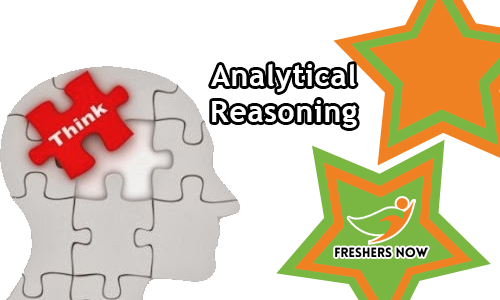
Analytical Reasoning Quiz – Reasoning Questions and Answers: Hello candidates, searching for Analytical Reasoning Quiz? Then you’re in the correct place. We are providing an Analytical Reasoning quiz which is very useful for candidates who want to crack their competitive exam easily. Moreover, by solving this quiz, you can not only get enough knowledge to crack any exam but also you can boost up your skills. Hence in the below sections, you can visualize more benefits of practicing Analytical Reasoning Questions and Answers.
Many competitive exams consist of Analytical Reasoning as one of the significant parts. Because of this reason, one has to study Analytical Reasoning wisely. The competitive exams like GRE, GMAT, CAT, IBPS, etc. Therefore many candidates are willing to qualify for their reviews with maximum marks. So they can go to the different sites and books to learn. But Analytical Reasoning Quiz is the best choice to practice for all the aspirants. Here look at the below section for more details.
Analytical Reasoning Quiz – Details
In this section, we are providing the details about Analytical Reasoning Quiz. By which the candidates can know about the brief info about the Analytical Non-Verbal Reasoning Questions and Answers. Let’s have a glance look through it.
| Quiz Name | Analytical Reasoning |
| Category | Non-Verbal Reasoning Quiz |
| Number of Questions | 10 |
| Time | 30 Minutes |
| Exam Type | MCQ (Multiple Choice Questions) |
Analytical Reasoning Questions – Practice MCQ Online Test
1. Find the number of triangles in the given figure.

A. 8
B. 10
C. 12
D. 14
Answer: D)14
Explanation:
The figure may be labeled as shown.

The simplest triangles are AHG, AIG, AIB, JFE, CJE, and CED i.e. 6 in number
The triangles are composed of two components each are ABG, CFE, ACJ, and EGI i.e. 4 in number.
The triangles composed of three components each are ACE, AGE, and CFD i.e. 3 in number
There is only one triangle i.e. AHE composed of four components.
Therefore, there are 6 + 4 + 3 + 1 = 14 triangles in the given figure
2. Find the number of squares in the below figure.
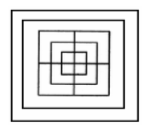
A. 13
B. 15
C. 14
D. 17
Answer: D) 17
3. Find the number of parallelograms in the below figure
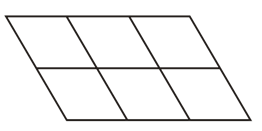
A. 18
B. 20
C. 19
D. 16
Answer: D) 16
Explanation:
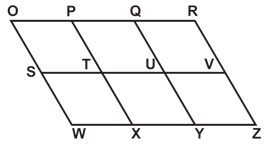
The simplest Parallelogram is OPTS, PQUT, QRVU, STXW, TUYX, UVZY, these are 6 in number.
The Parallelogram is composed of two components each are OQUS, PRVT, SUYW, TVZX, OPXW, PQYX, QRZY, these are 7 such Parallelograms.
And the Parallelogram is composed of three components each are ORVS, SVZW these are 2 Parallelograms.
Therefore, the Parallelogram is composed of four components each are OQYW, PRZX these are 2 Parallelograms.
Only 1 Parallelogram of six components is ORZW.
So there are 6+7+2+2+1 = 18.
4. 
A. 16
B. 18
C. 14
D. 15
Answer: B) 18
Explanation:
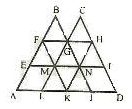
There are a total of 10+2+4+2 = 18 triangles in this figure.
5. What will be the number of hexagonal in the following figure?
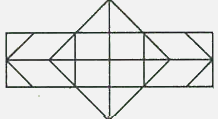
A. 4
B. 6
C. 2
D. 5
Answer: B) 6
6. What will be the number of hexagonal in the following figure?
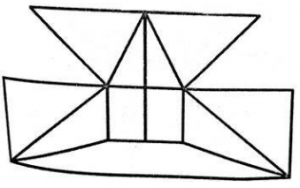
A. 19
B. 18
C. 16
D. 17
Answer: D) 17
Explanation:
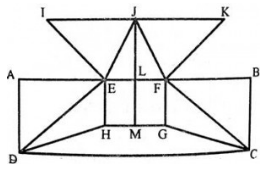
7. Find the number of triangles in the given figure.
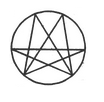
A. 22
B. 24
C. 26
D. 28
Answer: D) 28
Explanation:
The figure may be labeled as shown.
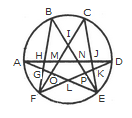
The simplest triangles are AGH, GFO, LFO, DJK, EKP, PEL, and IMN i.e. 7 in number. The triangles having two components each are GFL, KEL,
AMO, NDP, BHN, CMJ, NEJ, and HFM i.e. 8 in number. The triangles have three components each being IOE, IFP, BIF, and CEI i.e. 4 in number.
The triangles have four components each are ANE and DMF i.e. 2 in number. The triangles having five components each are FCK, BGE and
ADL i.e. 3 in number. The triangles have six components each being BPF, COE, DHF, and AJE i.e. 4 in number.
Total number of triangles in the figure = 7 + 8 + 4 + 2 + 3 + 4 = 28
8. What is the minimum number of different colors required to paint the given figure such that no two adjacent regions have the same color?
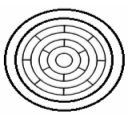
A. 1
B. 6
C. 5
D. 2
Answer: D) 2
9. Find the number of triangles in the given figure.
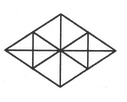
A. 16
B. 22
C. 28
D. 32
Answer: C) 28
Explanation:
The figure may be labeled as shown.
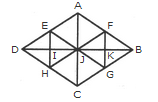
The simplest triangles are AFJ, FJK, FKB, BKG, JKG, JGC, HJC, HIJ, DIH, DEI, EIJ, and AEJ i.e. 12 in number. The triangles are composed of two components each are JFB, FBG, BJG, JFG, DEJ, EJH, DJH, and DEH i.e. 8 in number. The triangles are composed of three components each is AJB, JBC, DJC, and ADJ i.e. 4 in number. The triangles are composed of six components each are DAB, ABC, BCD, and ADC i.e. 4 in number.
Thus, there are 12 + 8 + 4 + 4 = 28 triangles in the figure.
10. Find the number of parallelograms.
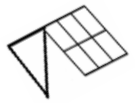
A. 8
B. 10
C. 15
D. None Of These
Answer: D) None Of These
Therefore the above given is detailed information about the quiz. Amazing right? Of course yeah. Because this kind of quiz increases the memory power of an individual. Due to this, the candidate can remember the concept for a long time. Hence daily practice may lead to several benefits. So my dear candidates go through the below sections to know the benefits, to practice the quiz and also the pattern of the result, etc.
11. How many triangles are there in the following figure?
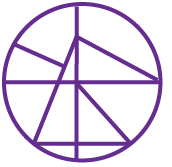
A – 2
B – 4
C – 5
D – More than 5
Answer: C) 5
Explanation: There are 5 triangles present in the figure.
12. How many quadrilaterals are there in the following figure?
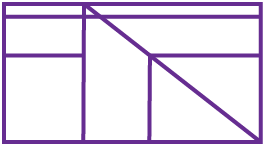
A – 6
B – 5
C – 4
D – More than 6
Answer: D) More than 6
Explanation: There are more than 6 quadrilaterals present in the figure. Hence, option d.
13. How many triangles are there in the following figure?
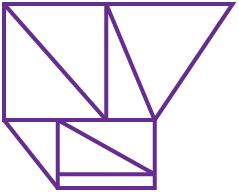
A – 6
B – 5
C – 4
D – 7
Answer: D) 7
Explanation: There is a total of 7 triangles present in the figure. Hence, option d.
14. How many triangles are there in the following figure?
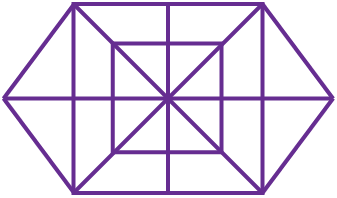
A – 20
B – More than 20
C – 16
D – 18
Answer: B) More than 20
Explanation: There are more than 20 triangles present in the figure. Hence, option b.
15. How many triangles are there in the following figure?
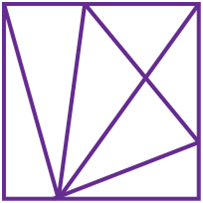
A – 15
B – 12
C – 13
D – 14
Answer: B) More than 20
Explanation: There is a total of 13 triangles present in the figure. Hence, option c.
16. How many triangles are there in the following figure?
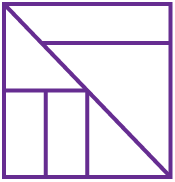
A – 5
B – 2
C – 6
D – 7
Answer: A) 5
Explanation: There are total 5 triangles present in the figure. Hence, option a.
17. How many quadrilaterals are there in the following figure?
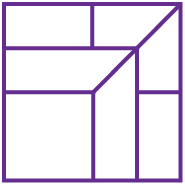
A – 6
B – 8
C – 9
D – More than 10
Answer: D) More than 10
Explanation: There are more than 10 quadrilaterals present in the figure. Hence, option d.
18. How many triangles does the figure have?
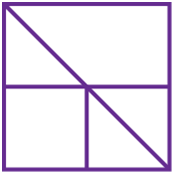
A – 7
B – 3
C – 4
D – 5
Answer: D) 5
Explanation: There are 5 triangles in the figure. Hence, option d.
19. How many polygons are there in the following figure?
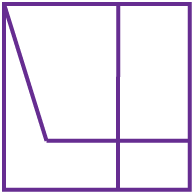
A – 7
B – 5
C – 6
D – More than 7
Answer: D) More than 7
Explanation: There are more than 7 polygons present in the figure. Hence, option d.
20. How many triangles are there in the following figure?
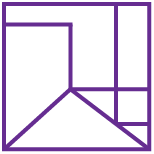
A – 2
B – 3
C – 4
D – More than 4
Answer: C) 4
Explanation: There are 4 triangles present in the figure. Hence, option c.
21. How many triangles does the figure have?

A – 6
B – 2
C – 5
D – 7
Answer: C) 5
Explanation: There are 5 triangles in the figure. Hence, option c.
22. How many triangles does the figure have?
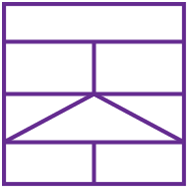
A – 6
B – 2
C – 4
D – 3
Answer: D) 3
Explanation: There are 3 triangles in the figure. Hence, option d.
23. How many triangles does the figure have?
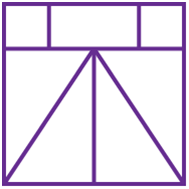
A – 1
B – 2
C – 6
D – 5
Answer: D) 5
Explanation: There are 5 triangles in the figure. Hence, option d.
24. How many triangles does the figure have?
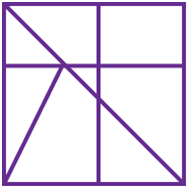
A – 5
B – 9
C – 7
D – 10
Answer: B) 9
Explanation: There are 9 triangles in the figure. Hence, option b.
25. How many triangles are there in the following figure?
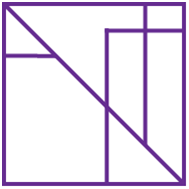
A – 4
B – 3
C – 5
D – 6
Answer: C) 5
Explanation: There is a total of 5 triangles present in the figure. Hence, option c.
26. How many triangles are there in the following figure?
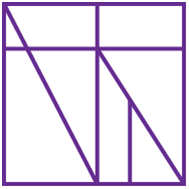
A – 5
B – 4
C – 6
D – 7
Answer: D) 7
Explanation: There is a total of 7 triangles present in the figure. Hence, option d.
27. How many triangles are there in the following figure?
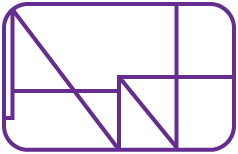
A – 6
B – 2
C – 4
D – 3
Answer: C) 4
Explanation: There is a total of 4 triangles present in the figure. Hence, option c.
28. How many triangles are there in the following figure?

A – More than 6
B – 6
C – 5
D – 4
Answer: A) More than 6
Explanation: There are a total of 8 triangles present in the figure. Hence, option a.
29. How many triangles are there in the following figure?
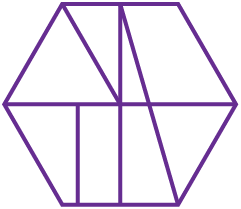
A – 6
B – 5
C – 4
D – 2
Answer: B) 5
Explanation: There are total 5 triangles present in the figure. Hence, option b.
30. How many quadrilaterals are there in the following figure?
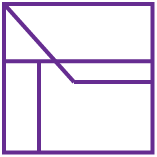
A – 3
B – 5
C – 4
D – More than 5
Answer: D) More than 5
Explanation: There are more than 5 quadrilaterals present in the figure. Hence, option d.
About Analytical Non Verbal Reasoning Questions
Analytical Reasoning is nothing but looking at the information, let it be a qualitative, quantitative, and discrete pattern. It is axiomatic in that its truth is self-evident. In contrast, false reasoning requires that we include empirical observations, which are always open to doubt still. According to Kant, analytic rationale represents judgments made upon statements that are on the virtue of the state’s content. In other words, it is an understanding of the phrase beyond meanings.
By practicing the Analytical Reasoning quiz, the individual can clearly understand the topic of Analytical Reasoning. Because the exam covers every problem in a non-verbal format that can be very useful and a trick to learn things quickly. Moreover, this quiz has an explanation part that can help the individual to understand the concept transparently. Hence Analytical Reasoning Quiz is easy to solve, and it covers every part of Analytical Reasoning that boosts up the skills of the individual.
Benefits of Practicing Analytical Reasoning Quiz
- There are many benefits of practicing the Analytical Reasoning quiz. They are:
- The primary advantage of practicing the Analytical Reasoning quiz is this quiz covers every phase of the Analytical Reasoning.
- Analytical Reasoning quiz allocates time to the individual to solve the exam.
- Moreover, it displays the number of questions that the candidate has to submit on the top row.
- Hence daily practicing this quiz can recharge your skills and confidence that are very useful to crack your exam.
- Therefore these are the benefits of practicing Analytical Reasoning quiz often.
Results of Analytical Reasoning Quiz
- The pattern of the Analytical Reasoning Quiz is similar to the online competitive exams.
- The result is in the form of some questions attempted, marks, grades, and points.
- Analytical Reasoning quiz after submission displays results along with a quick explanation.
- The explanation is brief and in simple language which can be understandable by all.
- Hence this is the pattern of the result of the Analytical Reasoning Quiz.
The result format can help the candidate to gain confidence before appearing in their respective competitive exams. Hence don’t miss the golden opportunity to practice the quiz on our page which acts as a weapon for cracking any competitive exam effortlessly. For more quizzes or daily fresh updates visit of website freshersnow.com often.



